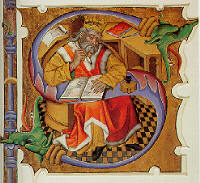
History of Canon Law
Write an essay covering each of these points. It should be typed, double-spaced, proofread, and no longer than 15 pages. The font should be 12 point, the margins 1" left and right, top and bottom. In the essay, each new section should have a number corresponding to the sections below. I would like to receive your essay as a Word or WordPerfect document (Windows; I cannot do Mac). Please label your file with your name, last first, first last, e.g. PenningtonKen.doc Submit your essay to me as an email attachment.
Final Essay Due: Friday, December 13, 2014. (Nota bene: If you are enrolled in the School of Canon Law, you must have the permission of the Dean of the School to receive an incomplete. All other students need only my permission)
Write on the first two topics:

1. As canon law took its place besides Roman law in the Ius commune canonistic jurisprudence became central to European legal thought. Gratian was the key figure in elevating canon law to a status equal to Roman law in the schools. Describe Gratian's methodology and purpose. In what ways did Gratian's approach to law shape the future of canon law?
2. Using the first twenty distinctions of his Decretum describe Gratian=s first attempt to formulate a doctrine of law and legislative authority in canon law and in the Ius commune. What was the role of Ius naturale, justice, equity, and reason in Gratian's thinking about law. Outline the progress of legislative doctrine from "all law is custom" to "all law resides in legislative institutions." Describe how Gratian's conception of law differed from that of the compilers of decretal collections in the thirteenth and fourteenth centuries, but how it shaped the contents of them. Discuss the introduction of "stare decisis" by the canonists and give examples from the marriage decretals of Pope Innocent III how the papal curia decided cases that were appealed to Rome.
Write on two of the following four topics:
1. Discuss the establishment of canonical procedure, the ordo iudiciarius, in the eleventh and twelfth centuries. Discuss the introduction of inquisitorial procedure. Trace the importance of procedural norms from 1300 to 1700. In addtion to the lectures, read: "Innocent Until Proven Guilty: The Origins of a Legal Maxim" Due Process, Community, and the Prince in the Evolution of the Ordo iudiciarius;
2. Discuss how jurists in the medieval and early modern periods created legal norms and individual rights. Give at least four examples of the norms that they created. Pennington's essays on rights are necessary reading for this question! Pennington, "The History of Rights in Western Thought" "Sovereignty and Rights in Medieval and Early Modern Jurisprudence: Law and Norms without a State", "Representation in Medieval Canon Law," (Discusses the right to consent in canon law)
3. Describe the role of the canonists in medieval society from ca. 1200 to 1500. Read Pennington's biographies of notable canonists. And watch these videos:
Canonists in the Late Middle Ages Video 2006 Video 2007
4. "Legista sine canonibus parum valet, canonista sine legibus nihil." This maxim is often used to justify why a modern canonist should know Roman law. Is there a historical justification for the maxim? Discuss the role of Roman law in the development of canonical jurisprudence. In addition to all the information in my lectures, read: Roman Law at the Papal Curia in the Early Twelfth Century